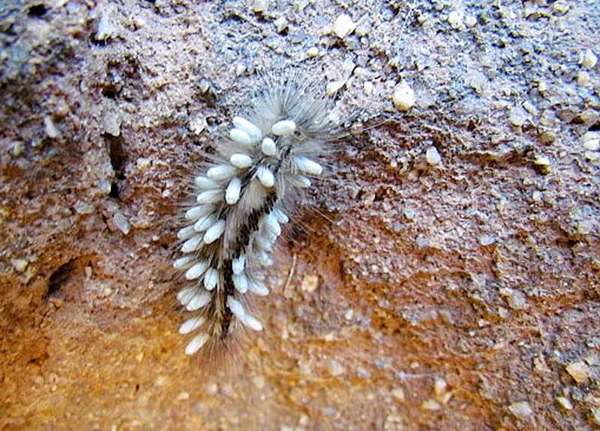I had taken the children of the Sindhi School, in Malleswaram, on a nature trail to the Bannerghatta Zoo area, and it was they who spotted this very interesting-looking caterpillar, and asked me what it was.
“Looks as if the caterpillar has also packed a lot of lunch for a picnic in the Zoo!” joked one of the children. The reality, as I found out, was very, very different… this caterpillar was actually carrying its own death on its back, not its food!

A variety of wasps called ‘Braconids,’ deposit their eggs on the backs of certain caterpillars, like this one. They cause these “host” caterpillars to become less active, and often sterile. When the eggs hatch, later, the newly-emerged larvae will feed on the caterpillar. So… the caterpillar was not carrying food… it was going to *be* the food!
This is just another example of the drama that nature provides, under our feet, and right in our gardens. So the next time you look at a caterpillar, do indulge your curiosity about any details you may notice about it. Thanks to the students of the Sindhi School, and their tireless teacher, Subbalakshmi (she takes the children on outings on her own initiative), I too learnt this riveting lesson of the natural world.
Yes, even I have seen this type of caterpillar in our apartment wall. One day my son came running and asked my phone to take some photograph of something very odd. He was saying “Mummy I have seen a new variety of caterpillar, come soon, It’s awesome”.
I went and saw. I too thought like that only. Maybe a different variety of caterpillar. Now after reading this article only I understood.
Nice observation…our children notice more than we do!